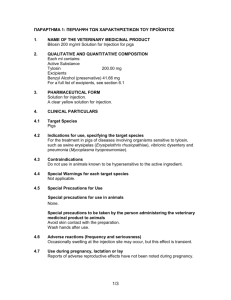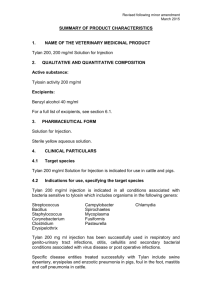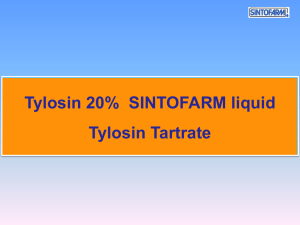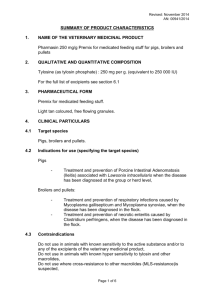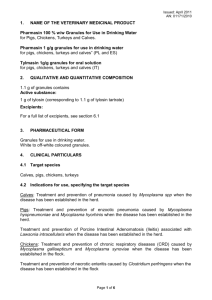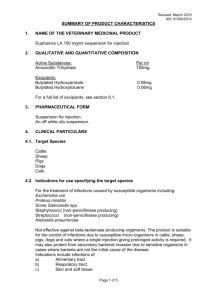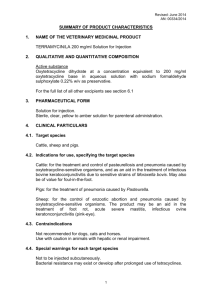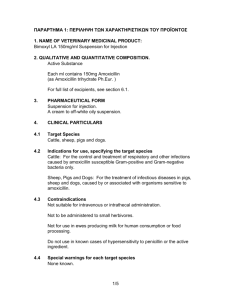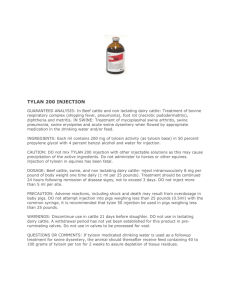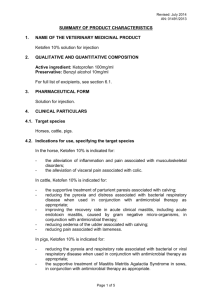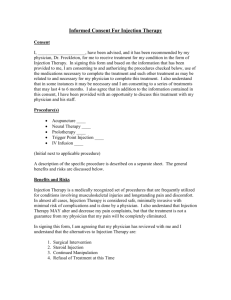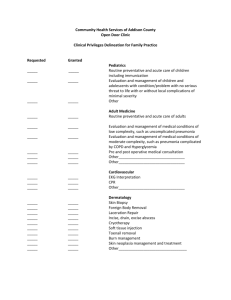AN: 00919/2013 Issued: December 2014 SUMMARY OF PRODUCT
advertisement
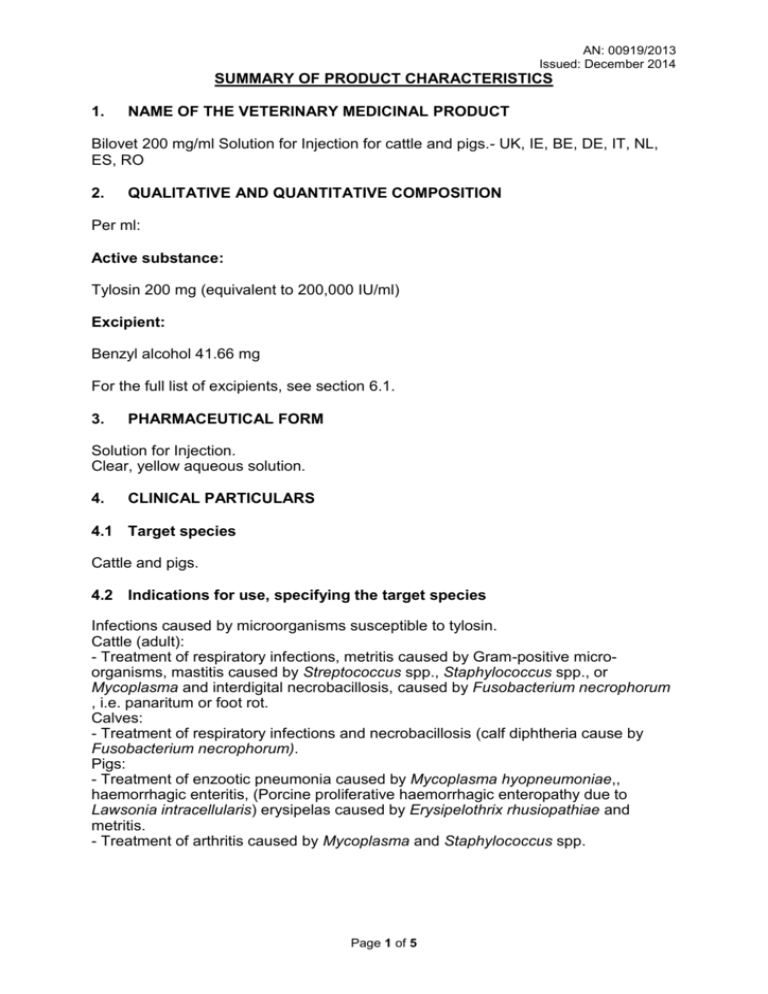
AN: 00919/2013 Issued: December 2014 SUMMARY OF PRODUCT CHARACTERISTICS 1. NAME OF THE VETERINARY MEDICINAL PRODUCT Bilovet 200 mg/ml Solution for Injection for cattle and pigs.- UK, IE, BE, DE, IT, NL, ES, RO 2. QUALITATIVE AND QUANTITATIVE COMPOSITION Per ml: Active substance: Tylosin 200 mg (equivalent to 200,000 IU/ml) Excipient: Benzyl alcohol 41.66 mg For the full list of excipients, see section 6.1. 3. PHARMACEUTICAL FORM Solution for Injection. Clear, yellow aqueous solution. 4. CLINICAL PARTICULARS 4.1 Target species Cattle and pigs. 4.2 Indications for use, specifying the target species Infections caused by microorganisms susceptible to tylosin. Cattle (adult): - Treatment of respiratory infections, metritis caused by Gram-positive microorganisms, mastitis caused by Streptococcus spp., Staphylococcus spp., or Mycoplasma and interdigital necrobacillosis, caused by Fusobacterium necrophorum , i.e. panaritum or foot rot. Calves: - Treatment of respiratory infections and necrobacillosis (calf diphtheria cause by Fusobacterium necrophorum). Pigs: - Treatment of enzootic pneumonia caused by Mycoplasma hyopneumoniae,, haemorrhagic enteritis, (Porcine proliferative haemorrhagic enteropathy due to Lawsonia intracellularis) erysipelas caused by Erysipelothrix rhusiopathiae and metritis. - Treatment of arthritis caused by Mycoplasma and Staphylococcus spp. Page 1 of 5 AN: 00919/2013 Issued: December 2014 4.3 Contraindications The product should not be given to chickens or turkeys. Do not administer to horses or other equines in which injection of tylosin may be fatal. Do not administer to animals with known hypersensitivity to tylosin, other macrolides or any of the excipients. 4.4 Special warnings for each target species None. 4.5 Special precautions for use Special precautions for use in animals Use of the product should be based on susceptibility testing of the bacteria isolated from the animal. If this is not possible, therapy should be based on local epidemiological information. For administration by the intramuscular route only. Use different injection sites for repeat injections. Use of the product deviating from the instructions given in the SPC may increase the prevalence of bacteria resistant to the tylosin and may decrease the effectiveness of treatment with other macrolide antibiotics, due to the potential for cross resistance. Special precautions to be taken by the person administering the veterinary medicinal product to animals Care should be taken to avoid accidental self-injection. If accidental self-injection occurs, seek medical attention immediately. In the event of accidental skin contact, wash thoroughly with soap and water. In case of accidental eye contact, flush the eyes with plenty of clean, running water. Wash hands after use. Tylosin may induce irritation. Macrolides, such as tylosin, may also cause hypersensitivity (allergy) following injection, inhalation, ingestion or contact with skin or eye. Hypersensitivity to tylosin may lead to cross reactions to other macrolides and vice versa. Allergic reactions to these substances may occasionally be serious and therefore direct contact should be avoided. Do not handle the product if you are allergic to ingredients in the product. If you develop symptoms following exposure, such as skin rash, you should seek medical advice and show the physician this warning. Swelling of the face, lips and eyes or difficulty in breathing are more serious symptoms and require urgent medical attention. Page 2 of 5 AN: 00919/2013 Issued: December 2014 4.6 Adverse reactions (frequency and seriousness) Possible adverse reactions attributed to the product when used as recommended and their frequency are: In very rare cases the following have been observed; - swelling/inflammation at the site of injection, - vulval swelling in cattle, - oedema of the rectal mucosa, partial anal protrusion (‘rosebudding’), erythema and pruritus in pigs. - Anaphylactic shock and death. Blemishes may occur at the site of injection and can persist for up to 21 days following administration. 4.7 Use during pregnancy, lactation or lay No adverse effects to tylosin have been seen in fertility, multi-generation or teratology studies. Use only in accordance with the benefit/risk assessment by the responsible veterinarian. 4.8 Interaction with other medicinal products and other forms of interaction Lincosamide and aminoglycoside antibiotics can antagonise the action of tylosin. 4.9 Amounts to be administered and administration route For intramuscular injection: Cattle: 5-10 mg tylosin/kg bodyweight per day for 3 days (2.5 to 5 ml solution for injection per 100 kg bodyweight). Maximum injection volume per injection site should not exceed 15 ml. Pigs: 5-10 mg tylosin/kg bodyweight per day for 3 days (2.5 to 5 ml solution for injection per 100 kg bodyweight). Maximum injection volume per injection site should not exceed 1.3 ml. To ensure a correct dosage, body weight should be determined as accurately as possible to avoid underdosing. The closure should not be pierced more than 30 times. 4.10 Overdose (symptoms, emergency procedures, antidotes), if necessary Pigs and calves: Intramuscular injection of 30mg/kg bodyweight per day (three times maximum recommended dose) for five days produced no adverse effects. Page 3 of 5 AN: 00919/2013 Issued: December 2014 4.11 Withdrawal period(s) Pigs: Meat and offal - 9 days Cattle: Meat and offal- 28 days Milk - 5 days. 5. PHARMACOLOGICAL PROPERTIES Pharmacotherapeutic group: Antibacterials for systemic use, macrolides, tylosin ATC vet code: QJ01FA90 5.1 Pharmacodynamic properties Tylosin is a macrolide antibiotic produced by a strain of Streptomyces fradiae. It exerts its antimicrobial effect by binding to the 50S ribosomal subunit and inhibiting protein synthesis in susceptible micro-organisms. Macrolides are generally considered bacteriostatic at therapeutic concentrations and this action is time dependent. The tylosin spectrum of activity includes Gram-positive bacteria, some Gramnegative strains such as Pasteurella, and Mycoplasma spps at concentrations of 16µg/ml or less. It is not generally active against anaerobes. 5.2 Pharmacokinetic particulars Absorption: Following intramuscular injection, tylosin blood levels peak 1-2 hours post-injection. Duration of activity is approximately 12 hours. Distribution, Biotransformation and Elimination: Tylosin levels of 1.4 to 1.6 and 2.2 to 6.7 µg/ml were recorded in serum and lung tissue respectively following intramuscular injection of 8.8mg/kg bodyweight in pigs. Measurable amounts of tylosin were still present in both serum and lung tissue at 12 hours post injection. Tylosin concentrations were greater in lung tissue than serum at all sample times. 5.3 Environmental Properties Tylosin is persistent in some soils. 6. PHARMACEUTICAL PARTICULARS 6.1 List of excipients Benzyl Alcohol Propylene glycol Sodium hydroxide (for pH adjustment) Hydrochloric acid (for pH adjustment) Water for Injection 6.2 Incompatibilities In the absence of compatibility studies, this veterinary medicinal product must not be mixed with other veterinary medicinal products. Page 4 of 5 AN: 00919/2013 Issued: December 2014 6.3 Shelf life Shelf-life of the veterinary medicinal product as packaged for sale: 18 months. Shelf life after first opening of the immediate packaging: 28 days. 6.4. Special precautions for storage Do not store above 25°C. Protect from light. 6.5 Nature and composition of immediate packaging 100 ml, Type II amber glass vials sealed with a bromobutyl rubber bung with aluminium overseal and packaged in a cardboard carton. 6.6 Special precautions for the disposal of unused veterinary medicinal product or waste materials derived from the use of such products Any unused veterinary medicinal product or waste materials derived from such veterinary medicinal products should be disposed of in accordance with local requirements. 7. MARKETING AUTHORISATION HOLDER Cross Vetpharm Group Ltd. Broomhill Road Tallaght, Dublin 24 Ireland 8. MARKETING AUTHORISATION NUMBER Vm 12597/4060 9. DATE OF FIRST AUTHORISATION 22 December 2014 10. DATE OF REVISION OF THE TEXT December 2014 APPROVED Page 5 of 5 22/12/14
